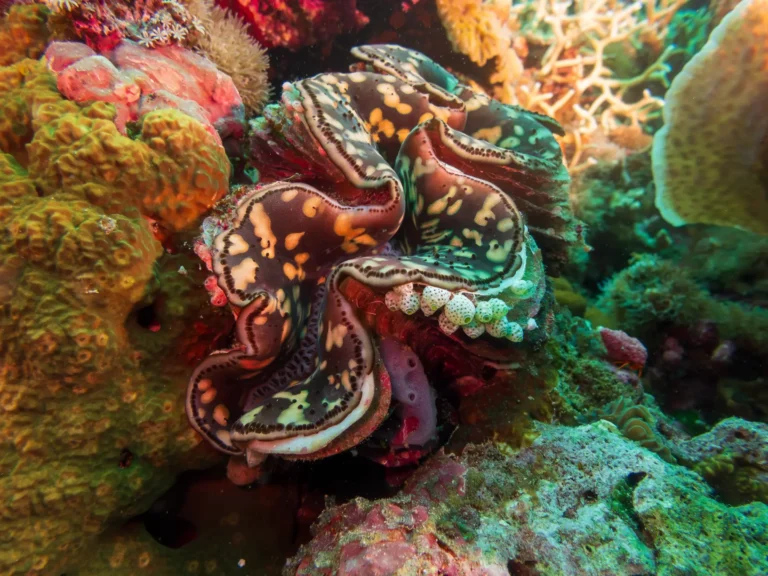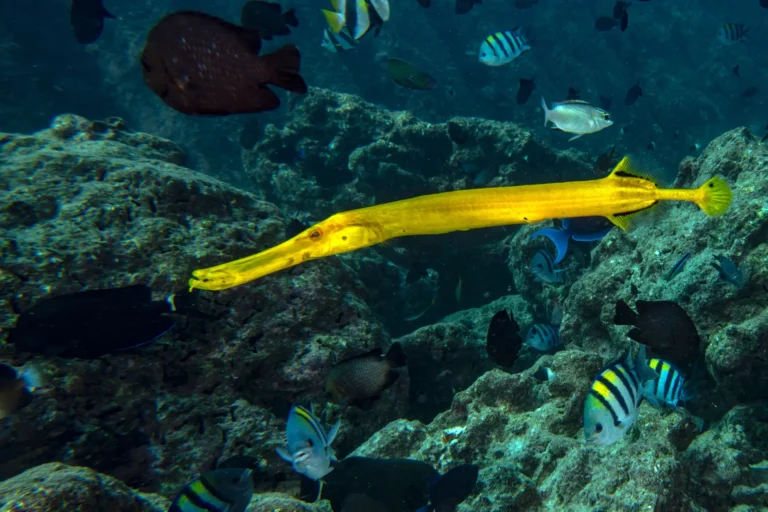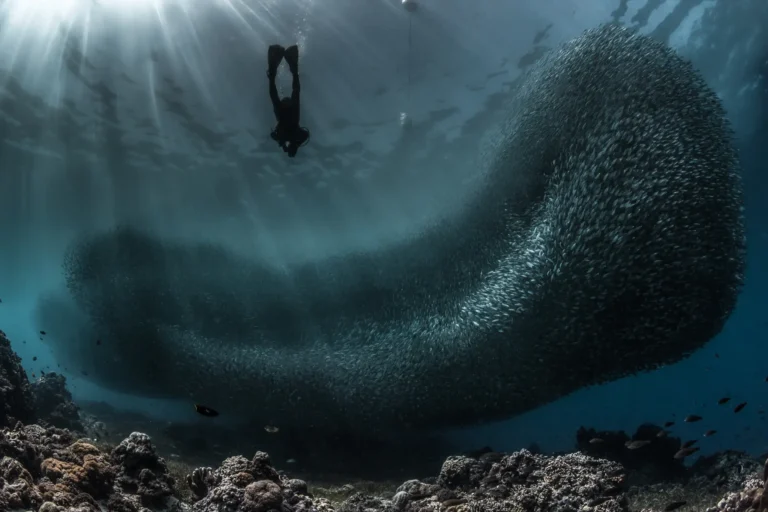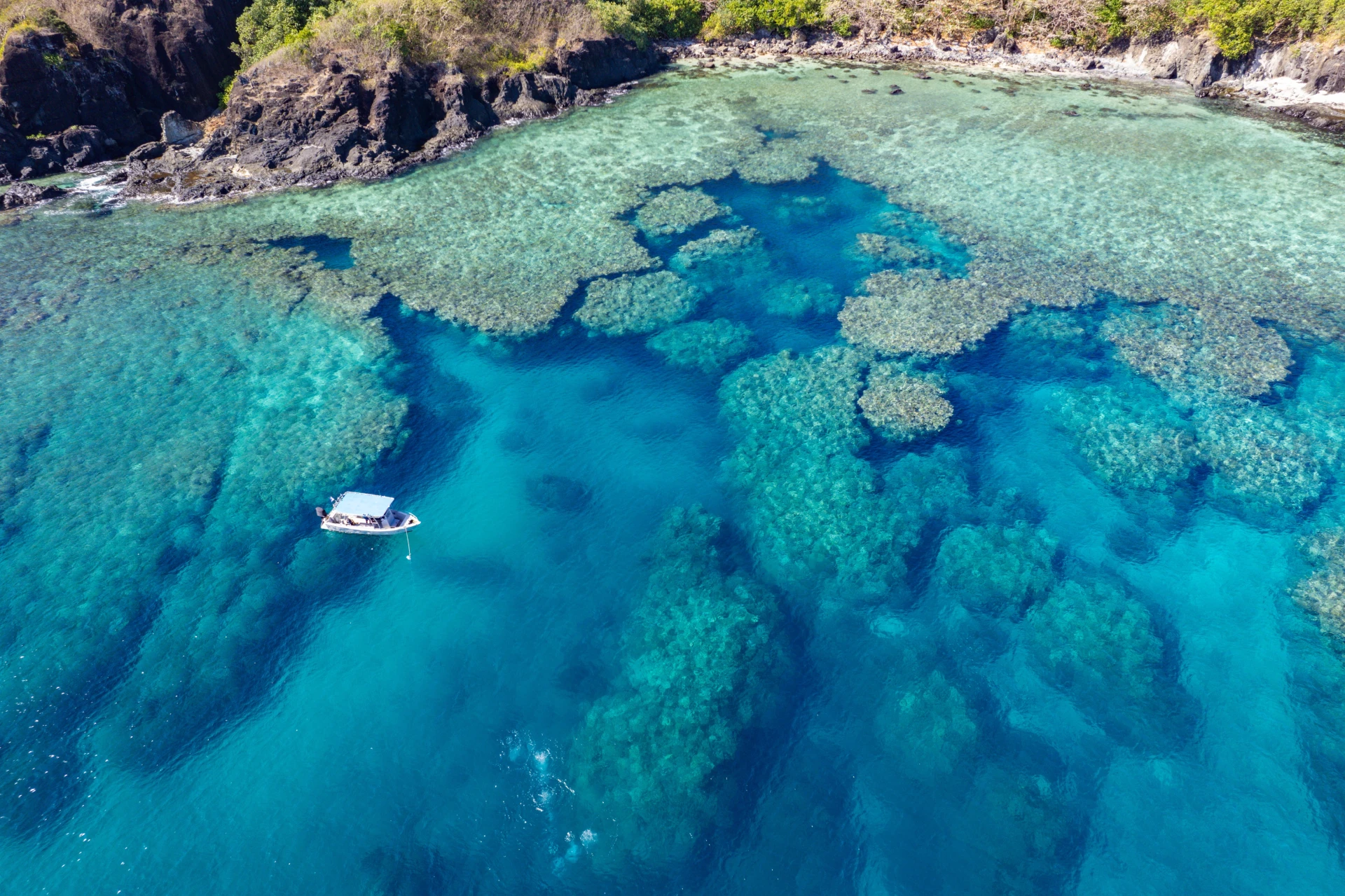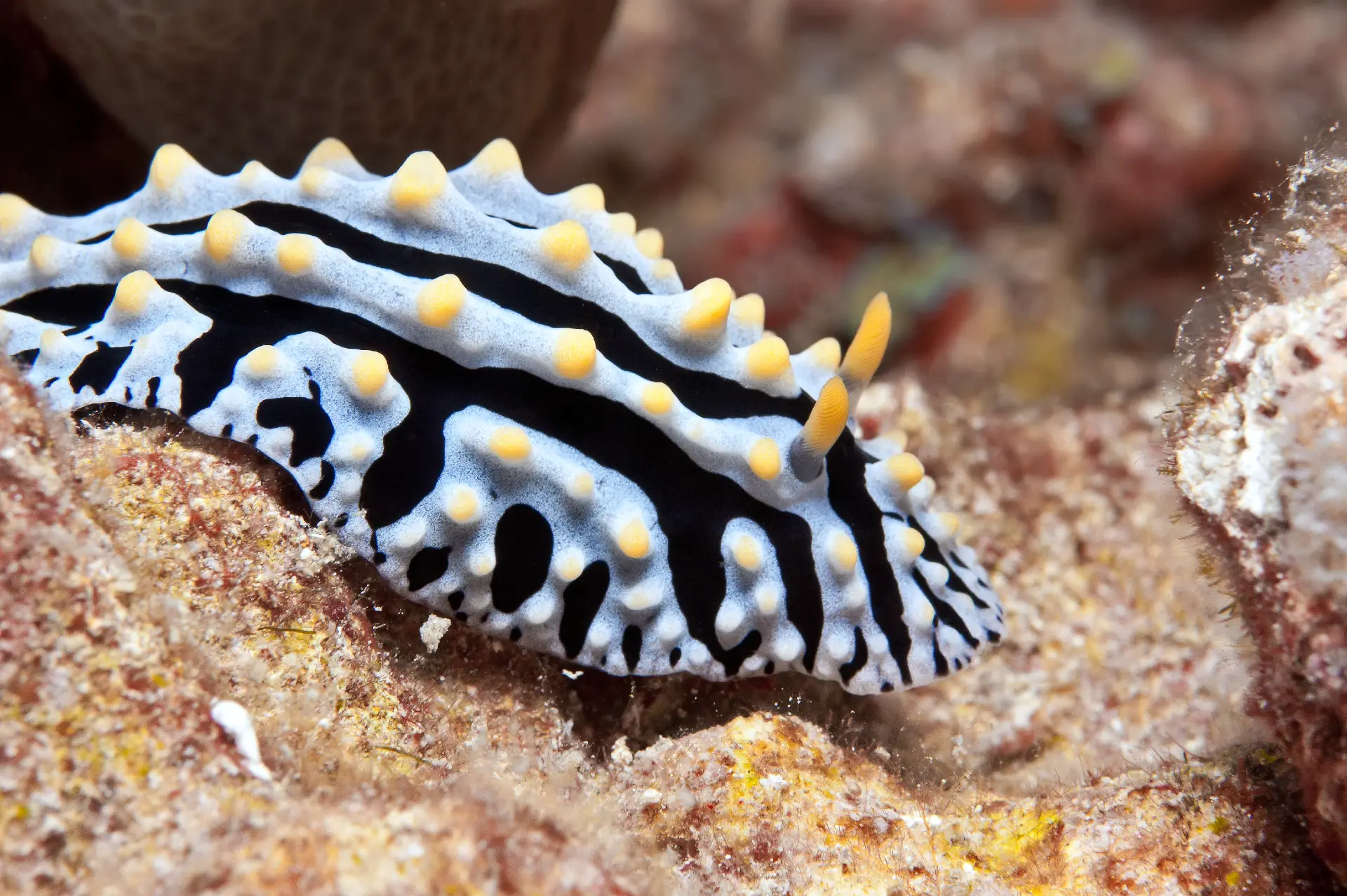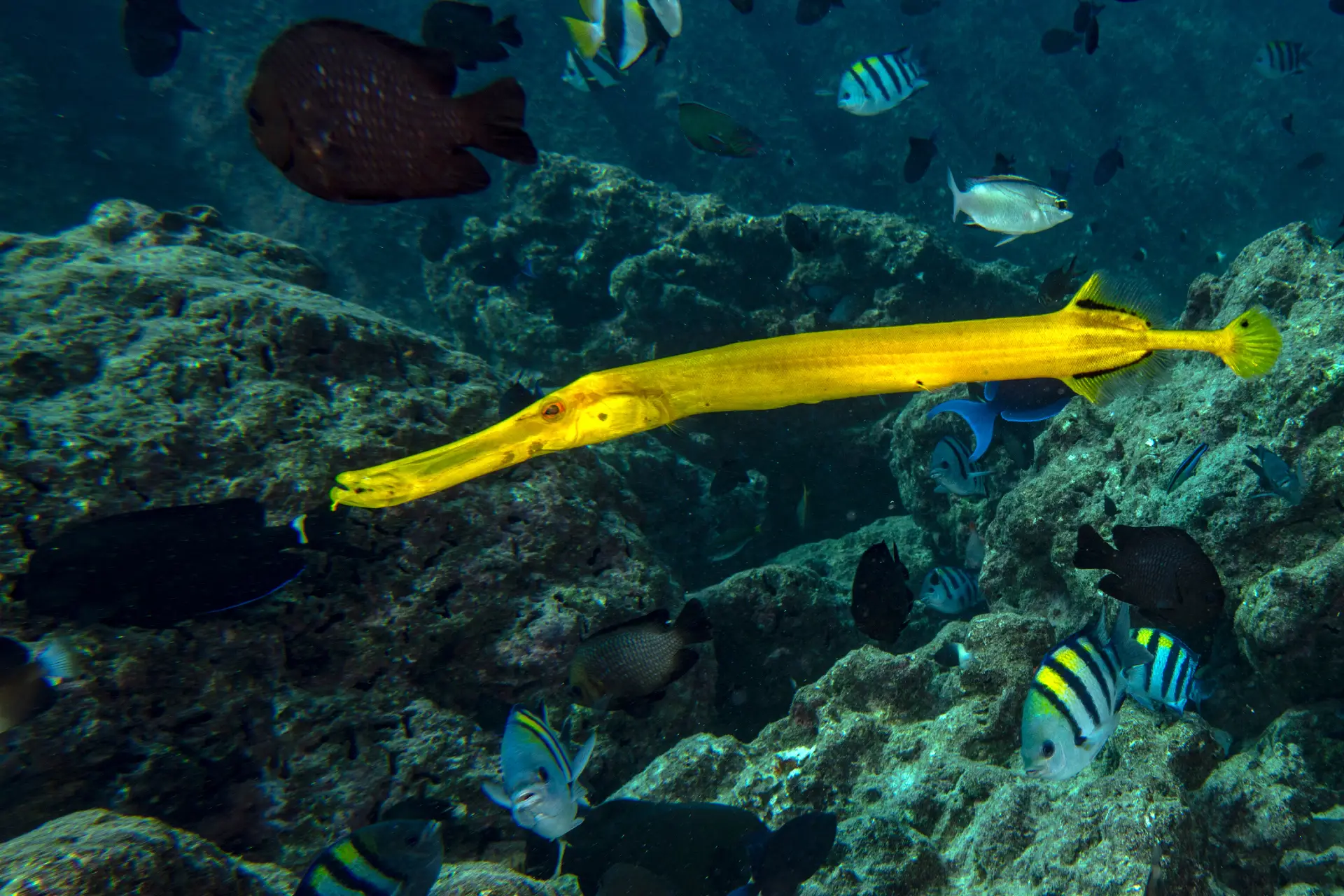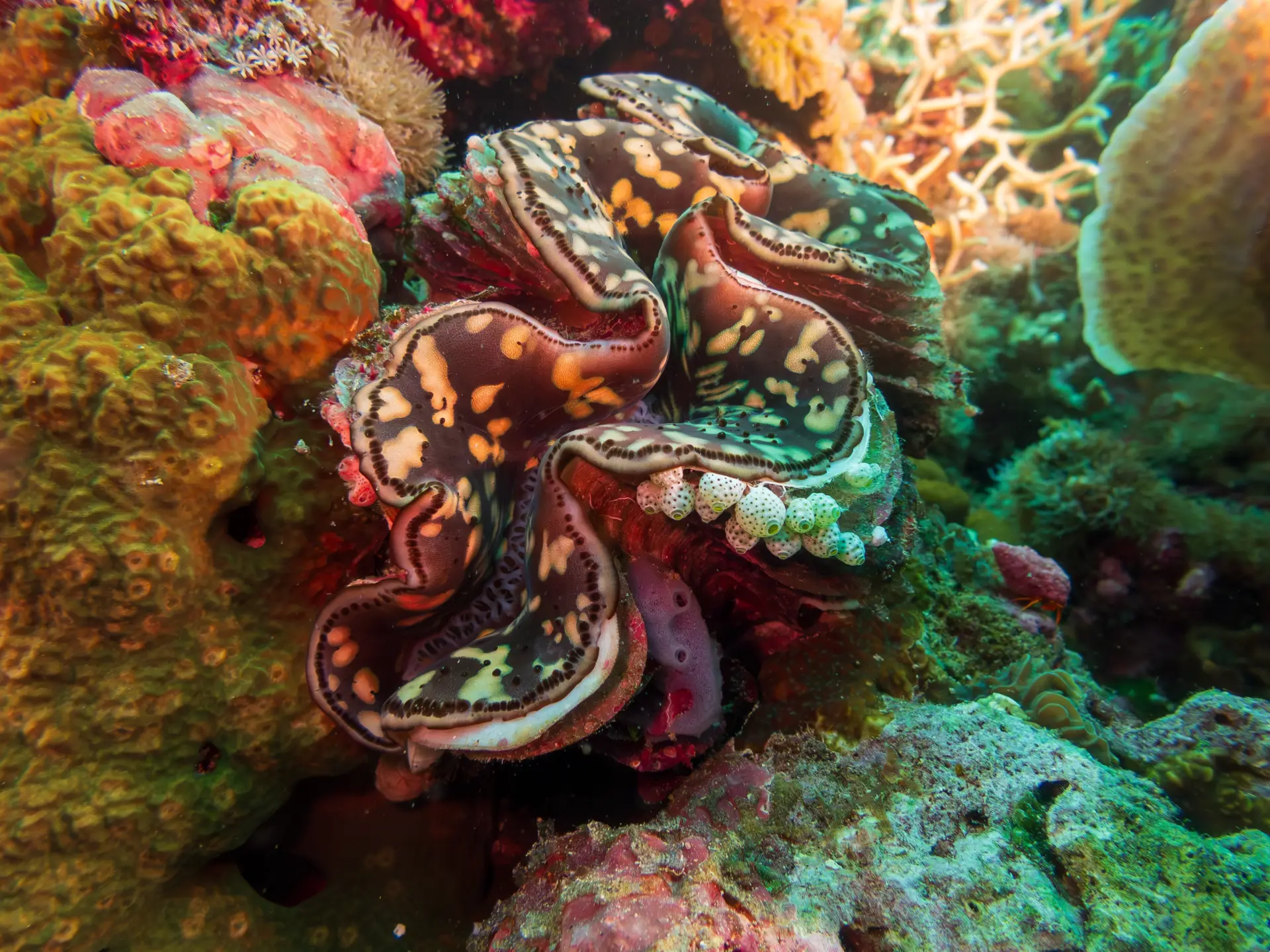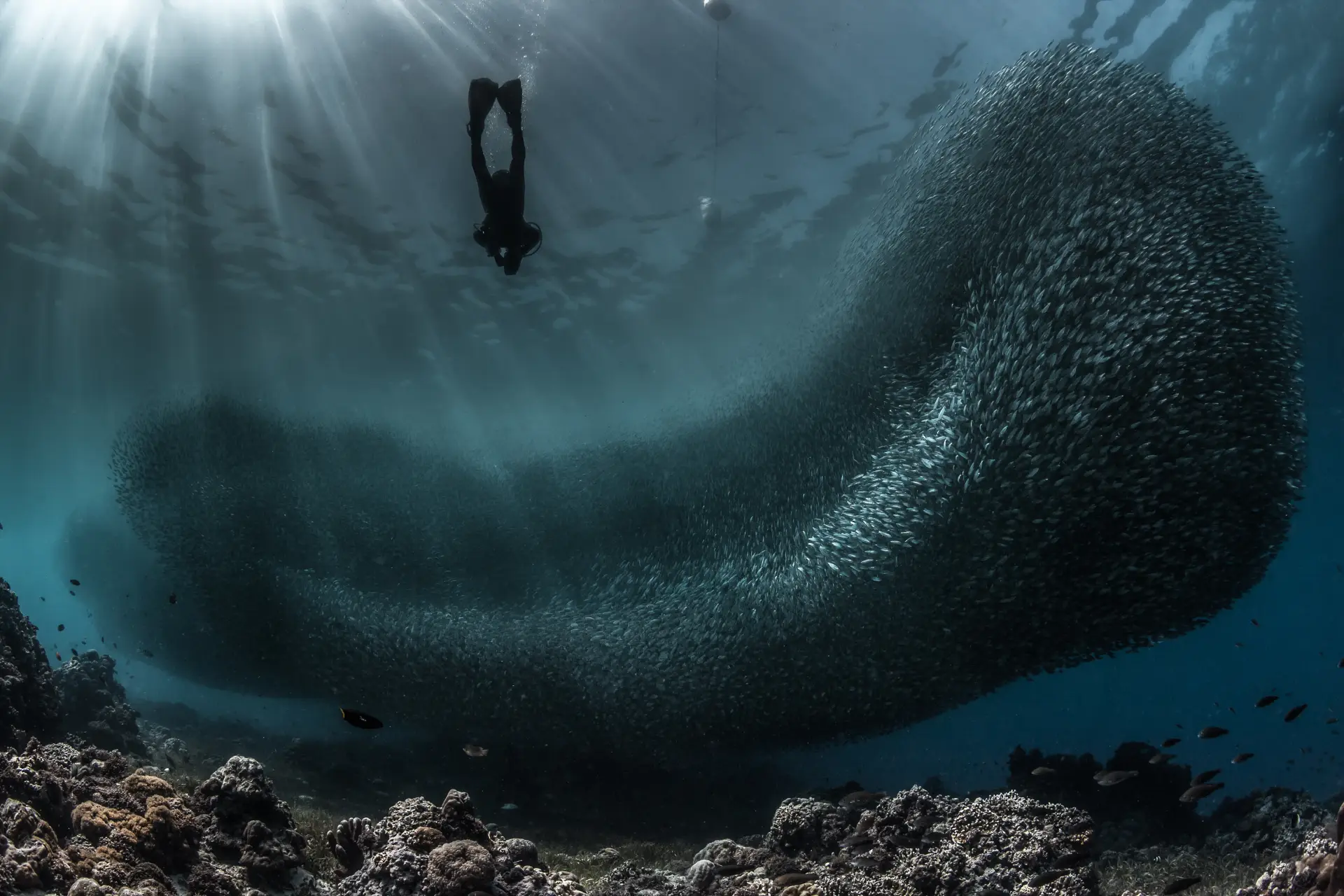Among the many marvels of Bohol’s underwater world, few are as striking—and as ecologically important—as the giant clam. Known for their brilliant colors, immense size, and slow, silent presence, these iconic mollusks are more than just photogenic curiosities. They are keystone species that help sustain the health of coral reef ecosystems. And in Bohol, they are also protected treasures.
If you’ve ever spotted a massive, iridescent shell peeking out from a coral garden while diving or snorkeling, chances are you’ve seen one of Bohol’s giant clams (Tridacna spp.). Let’s take a closer look at why these gentle giants matter, where to find them, and how divers can help protect them.
What Are Giant Clams?
Giant clams belong to the genus Tridacna, and some species can grow up to 1.2 meters (4 feet) across and weigh over 200 kilograms. Despite their size, they are filter feeders and photosynthesizers—living in a mutually beneficial relationship with symbiotic algae called zooxanthellae, which live in their tissues.
These algae perform photosynthesis, producing nutrients that the clam uses to grow. In return, the clam provides the algae with shelter and access to sunlight. This unique partnership is why giant clams thrive in shallow, sunlit reefs—just like the ones surrounding Bohol.
There are several species of Tridacna found in the Philippines, including:
- Tridacna gigas – The true giant clam, extremely rare in the wild.
- Tridacna squamosa – Recognizable by its wavy, fluted shell edges.
- Tridacna maxima – Smaller, but often more colorful and widely distributed.
Why Are Giant Clams Important?
Giant clams play a crucial ecological role on the reef:
- 🧹 Natural Filters: They filter large volumes of seawater, removing algae and excess nutrients that could harm corals.
- 🧱 Reef Builders: Their massive shells contribute to the reef’s structure, providing homes for small fish, crustaceans, and invertebrates.
- 🌿 Biodiversity Boosters: Their presence attracts other marine life and helps maintain a balanced ecosystem.
They’re also a cultural and economic symbol—prized in traditional practices and unfortunately targeted in the past for food, shells, and the aquarium trade. This exploitation led to severe population declines, making conservation a top priority.
Where to See Giant Clams in Bohol
Thanks to marine conservation efforts and the establishment of marine sanctuaries, giant clams are making a comeback in Bohol. While they don’t roam like fish, these sessile mollusks can be found in select dive sites and snorkeling areas around the island.
Top Spots to See Giant Clams:
- Balicasag Island – This marine sanctuary is home to a number of well-established clams, especially in shallower areas ideal for snorkeling.
- Napaling Reef (Panglao) – You may find Tridacna nestled among the corals near the drop-off, perfect for macro and wide-angle photography.
- Bohol’s Artificial Reef Projects – Some areas around Panglao and Dauis have clam seeding programs, where juvenile clams are planted and monitored for growth.
Always follow your guide’s instructions and maintain a safe distance. Clams are living animals, and touching or disturbing them can cause stress or damage.
Are Giant Clams Protected in Bohol?
Yes! Giant clams are protected under Philippine law, and collection, export, or trade is strictly prohibited. This includes:
- Republic Act No. 10654, which amends the Fisheries Code to protect endangered species.
- CITES (Convention on International Trade in Endangered Species), which lists giant clams under Appendix II, meaning international trade is regulated.
- Local Marine Protected Areas (MPAs), where clams are monitored and often part of reef rehabilitation programs.
At Sierra Madre Divers, we actively support these initiatives by educating divers, reporting illegal activities, and partnering with local conservation efforts.
How Divers Can Help Protect Giant Clams
Giant clams may be stationary, but their survival depends on our movement choices. Here’s how divers and snorkelers can help:
✅ Maintain good buoyancy control – Avoid accidentally kicking or knocking into reef structures where clams live.
✅ Never touch or stand on clams – Their delicate tissue and symbiotic algae can be damaged easily.
✅ Avoid collecting shells – Even empty shells are part of the ecosystem.
✅ Support dive operators who practice sustainable diving – Like Sierra Madre Divers!
✅ Spread awareness – Educate others about the importance of giant clams in the marine environment.
By being mindful underwater, we help ensure these incredible animals continue to thrive.
The Beauty of Giant Clams
Beyond their ecological value, giant clams are stunning to behold. Their mantles display a dazzling range of colors—blues, greens, purples, even golds—thanks to iridophores, cells that reflect light. No two clams look the same, making them a favorite subject for underwater photographers.
Watching sunlight ripple across a clam’s vibrant mantle as it slowly pulses open and closed is a reminder of how much beauty the ocean holds—even in the quietest corners.
Dive into Clam Conservation with Us
At Sierra Madre Divers, we believe every dive is a chance to learn, respect, and protect. Giant clams are just one of the many wonders Bohol has to offer—and with your help, they’ll be around for future generations of divers to admire.
Join us on a dive or snorkel trip and we’ll show you where these gentle reef guardians live. Let’s keep their story alive, one respectful dive at a time.
🌊 Book your next underwater adventure with Sierra Madre Divers and experience the wonder of Bohol’s reefs—giant clams and all.

